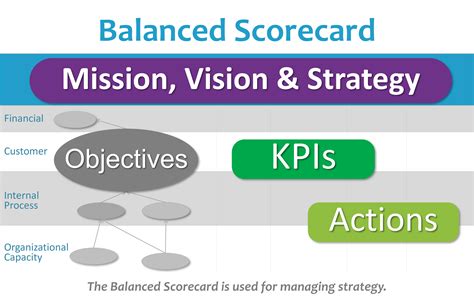Optimal muscle gains: How to overcome strength plateaus for peak performance?

Conquering the Wall: Understanding Strength Plateaus
Every dedicated lifter eventually faces it: the dreaded strength plateau. That moment when your progress grinds to a halt, the weights that once felt manageable now seem insurmountable, and new personal bests become a distant memory. It’s a frustrating, yet entirely normal, part of the fitness journey. But a plateau isn’t a dead end; it’s an invitation to re-evaluate, adapt, and grow stronger. Overcoming these training walls is crucial for continued muscle gains and unlocking your peak athletic potential.

Why Do Strength Plateaus Occur?
Before you can overcome a plateau, it helps to understand why they happen. Our bodies are incredibly adaptable. When you start a new training program, you see rapid progress because your body isn’t accustomed to the stress. Over time, it adapts to the demands you place on it. If you keep doing the same exercises with the same sets, reps, and intensity, your body stops seeing a reason to get stronger or build more muscle. Common culprits include:
- Lack of Progressive Overload: Not consistently increasing the demand on your muscles.
- Insufficient Recovery: Overtraining, poor sleep, and high stress levels hinder muscle repair and growth.
- Inadequate Nutrition: Not consuming enough calories, protein, or micronutrients to support muscle development and energy needs.
- Suboptimal Form: Using momentum instead of muscle, leading to less effective lifts and potential injury.
- Mental Fatigue: The psychological toll of repetitive training can diminish motivation and effort.
Strategic Approaches to Break Through
1. Re-evaluate Progressive Overload
Progressive overload isn’t just about adding more weight. It’s about consistently increasing the demand on your muscles in various ways. When adding weight isn’t an option, consider these:
- Increase Reps or Sets: If you can’t lift heavier, try adding a few more reps to your sets or an extra set.
- Decrease Rest Times: Shorter rest periods between sets increase the metabolic stress on your muscles.
- Increase Time Under Tension (TUT): Slow down the eccentric (lowering) phase of your lifts to keep the muscle working longer.
- Improve Form: Perfecting your technique can make the same weight feel heavier and more challenging, recruiting more muscle fibers.
- Increase Frequency: If you’re only hitting a muscle group once a week, try twice a week to stimulate more growth.

2. Implement Training Variation and Periodization
Your body thrives on novelty. Periodization involves strategically altering your training variables over time. This can mean:
- Deload Weeks: Every 4-8 weeks, take a week with reduced volume and intensity (50-70% of usual). This allows your body to recover fully and can lead to a surge in strength afterward.
- Vary Rep Ranges: Don’t always stick to 8-12 reps. Incorporate power phases (3-5 reps), strength phases (6-8 reps), and hypertrophy phases (10-15+ reps) into your programming.
- Swap Exercises: If your barbell bench press is stalled, try dumbbell presses, incline presses, or dips for a few weeks. Different exercises target muscles from slightly different angles, stimulating new growth.
- Incorporate Advanced Techniques: Drop sets, supersets, giant sets, rest-pause training, and partial reps (at the sticking point) can shock your muscles into new growth. Use these sparingly and strategically.

3. Optimize Your Nutrition and Hydration
You can train as hard as you want, but without proper fuel, your body won’t build muscle or recover efficiently. Ensure you are:
- In a Caloric Surplus: To build muscle, you generally need to consume more calories than you burn. A modest surplus (200-500 calories) is usually sufficient.
- Adequate Protein Intake: Aim for 1.6-2.2 grams of protein per kilogram of body weight to support muscle repair and synthesis.
- Balanced Macronutrients: Don’t neglect carbohydrates (for energy) and healthy fats (for hormone production and overall health).
- Hydration: Water plays a critical role in nutrient transport, muscle function, and performance. Drink plenty throughout the day.

4. Prioritize Recovery and Sleep
Muscle isn’t built in the gym; it’s built during recovery. Sleep is arguably the most crucial component of recovery. Aim for 7-9 hours of quality sleep per night. During deep sleep, your body releases growth hormone, which is vital for muscle repair and growth. Additionally, consider:
- Active Recovery: Light cardio, stretching, or foam rolling can improve blood flow and reduce muscle soreness.
- Stress Management: Chronic stress elevates cortisol, a hormone that can break down muscle tissue. Incorporate stress-reducing activities like meditation or hobbies.
![How To Be A People Person: 10 Tips For Being More Outgoing [UPDATED 2023]](/images/aHR0cHM6Ly90czQubW0uYmluZy5uZXQvdGg/aWQ9T0lQLi1TcERDamRaS0VNejN3T1pIczFYeFFIYUQ0JnBpZD0xNS4x.webp)
5. Refine Your Form and Seek Feedback
Sometimes, a plateau isn’t about strength but about efficiency. Poor form can limit the muscles being worked, increase the risk of injury, and prevent you from engaging the correct muscle groups effectively. Film yourself, train with a more experienced partner, or hire a coach to review your technique. Small adjustments can lead to significant breakthroughs.
Conclusion
Strength plateaus are a normal part of the journey toward optimal muscle gains and peak performance. Instead of being discouraged, view them as an opportunity to learn more about your body and refine your training strategy. By systematically applying progressive overload in varied ways, implementing periodization, optimizing your nutrition and recovery, and refining your technique, you can not only break through these barriers but emerge stronger, smarter, and more resilient than ever before. Stay consistent, stay patient, and keep pushing your limits.





